83. Side effect antibiotics.
side effects of antibiotics due to their allergenic effect.
a) allergic reactions:
fever
angioedema
serum sickness
polyarthritis
systemic lupus erythematosus
anaphylactic shock
b) skin reactions:
morbilliform rash, hemorrhagic rash (purpura)
hives
erythema nodosum and multiforme
exfoliative or contact dermatitis
c) oral cavity:
dryness, burning, soreness
itching of the mouth and tongue
stomatitis, acute glossitis, cheilosis, black or brown coating on the tongue
d) Gastrointestinal tract: nausea, vomiting, diarrhea
side effects and complications of antibiotic therapy associated with pharmacodynamic action.
a) nervous system:
damage to the VIII pair of cranial nerves
paresthesia
disturbance of sleep or emotional status
peripheral neuritis
psychosis or seizures
respiratory depression
b) blood:
eosinophilia (sensitization to any AB)
aplastic or hemolytic anemia
thrombocytopenia
leukopenia
hyperkalemia, hypernatremia, hypokalemic alkalosis
c) excretory system:
hematuria, crystalluria, urinary outflow disorder
acute tubular necrosis, nephrotoxicity
d) Gastrointestinal tract: jaundice, hepatitis, steatorrhea
side effects and complications of antibiotic therapy associated with chemotherapeutic effects.
A) dysbacteriosis– develops with the use of broad-spectrum antibiotics, accompanied by suppression and changes in the spectrum of intestinal microflora, colonization of the intestine by pathogenic microflora.
Manifestations: pseudomembranous colitis, enterocolitis, candidiasis (oral, pharyngeal, rectal, perianal)
b) immunosuppression
V) exacerbation reactions (Jarisch-Gersheimer reaction): bacteriolysis, endotoxin shock.
84. Combined antibiotic therapy. Rational combinations.
Indications for combination antibiotic therapy.
treatment of severely ill patients with suspected infection of unknown origin
preventing the development of resistant strains in some clinical situations
expansion of the spectrum of antimicrobial activity (therapy of mixed infections)
enhancing antimicrobial effects in severe conditions
reduction of toxicity of individual ABs
Principles of combination antibiotic therapy.
1. You cannot combine bactericidal and bacteriostatic ABs.
2. Absorbents with similar side effects should not be used together.
4. Combination antibiotic therapy should be convenient for the patient and, if possible, cost-effective
85. Sulfonamide drugs.
Classification of sulfonamide drugs for resorptive action according to its duration.
a) short-term action (T 1/2 10 hours): sulfonamide (streptocide),
sulfadimidine (sulfadimezin), sulfaethidol (etazol).
b) average duration of action (T 1/2 10-24 hours) : sulfadiazine.
c) long-acting (T 1/2 24-48 hours): sulfamethoxypyridazine, sulfadimethoxine, sulfadoxine
d) extra-long-acting (T 1/2 60 hours): sulfalene.
Features of the therapeutic effect of sulfonamide drugs combined with salicylic acid.
These drugs are more effective for inflammatory bowel diseases: sulfasalazine is broken down by intestinal microflora releasing sulfapyridine and 5-aminosalicylic acid; 5-aminosalicylic acid creates a high concentration in the intestinal lumen and has its main anti-inflammatory effect)
Indications for usesulfasalazine .
nonspecific ulcerative colitis
Crohn's disease
The mechanism of the antimicrobial action of sulfonamide drugs.
To form vital folic acid (which is involved in the synthesis of nucleic acids), microorganisms need extracellular para-aminobenzoic acid (PABA). Sulfonamides compete with PABA for the enzyme dihydropteroate synthetase, which leads to the formation of nonfunctional folic acid analogues.
Antibacterial spectrum of sulfonamides.
Initially, many gram-positive and gram-negative cocci and gram-negative rods were sensitive to sulfonamides, but they have now become resistant.
Sulfonamides remain active against nocardia, toxoplasma, chlamydia, malarial plasmodia.
Complications of sulfonamide therapy.
1. Nephrotoxicity of two types:
a) crystalluria due to acidic urine reaction
b) nephritis of hypersensitive nature
2. Dyspeptic symptoms (nausea, vomiting, diarrhea)
3. Skin reactions (rash, exfoliative dermatitis)
4. Neurological reactions
5. Hypothyroidism
6. Hematopoietic disorders (anemia, leukopenia)
7. Hepatotoxicity
Precautions required during sulfonamide therapy.
1. To prevent crystalluria, patients taking sulfa drugs should receive abundant alkaline drinks.
2. Correct choice of drug (when using long-acting drugs, side effects are usually less pronounced, which is explained by taking these drugs in lower doses)
NB! However, it must be taken into account that due to the slow release from the body and the possibility of accumulation, side effects with long-acting sulfonamides may be more persistent than when taking short-acting sulfonamides.
3. Careful adherence to the dosage regimen
Chemically, they are derivatives of sulfanilamide (sulfanilic acid amide).
Sulfonamides can be represented by the following groups.
Drugs used for resorptive action (well absorbed from the gastrointestinal tract) A. Medium-acting Sulfadimezin Etazol Sulfazin Urosulfan B. Long-acting Sulfapyridazine Sulfadimethoxin C. Ultra-long-acting Sulfalen
Drugs acting in the intestinal lumen (poorly absorbed from the gastrointestinal tract) Phthalazole
Preparations for topical use Sulfacyl sodium Sulfasina silver salt
The spectrum of action of sulfonamides is quite wide. It mainly includes the following infectious agents:
a) bacteria - pathogenic cocci (gram-positive and gram-negative), E. coli, pathogens of dysentery (Shigella), Vibrio cholerae, pathogens of gas gangrene (clostridia), pathogens of anthrax, diphtheria, catarrhal pneumonia, influenza;
b) chlamydia - causative agents of trachoma, ornithosis, inguinal lymphogranuloma;
c) actinomycetes;
d) protozoa - the causative agent of toxoplasmosis, plasmodium malaria. Sulfonamides are especially active against pneumococci, meningococci, gonococci, some types of hemolytic streptococci, as well as pathogens of bacterial dysentery.
The mechanism of the antimicrobial action of sulfonamides is associated with their competitive antagonism with para-aminobenzoic acid. Drugs in this group are quickly and completely absorbed from the gastrointestinal tract.
Of the sulfonamides with an average duration of action, the most commonly used are sulfadimezin, etazol, sulfazin, and urosulfan. Streptocide belongs to the same group.
To long-acting drugs include sulfapyridazine and sulfadimethoxine (madribon, madroxine). They are well absorbed from the gastrointestinal tract, but are released slowly.
Hypervigilance drug is sulfalene, which in bacteriostatic concentrations is retained in the body for up to 1 week.
In terms of antimicrobial activity, sulfonamides are significantly inferior to antibiotics, so their scope of use is quite limited. They are prescribed mainly for intolerance to antibiotics or the development of addiction to them. Sulfonamides are often combined with certain antibiotics.
Sulfanilamides for resorptive action are used for coccal infections, especially meningococcal meningitis, respiratory diseases, urinary and biliary tract infections, etc.
Of interest is the combination of sulfonamides with drugs that, by inhibiting dihydrofolate reductase, block the transition of dihydrofolic acid to tetrahydrofolic acid. These substances include trimethoprim.
The inhibitory effect of such a combination, manifested at two different stages, significantly increases antimicrobial activity - the effect becomes bactericidal.
The drug Bactrim contains trimethoprim and sulfamethoxazole. It has high antibacterial activity. Has a bactericidal effect. Well absorbed from the gastrointestinal tract.
Bactrim is contraindicated in cases of severe dysfunction of the liver, kidneys and hematopoiesis. It should not be prescribed to children under 6 years of age or during pregnancy.
Sulfadimidine, sulfadiazine, sulfadimethoxine, co-trimoxazole, phthalylsulfathiazole (phthalazole), sulfacetamide, sulfasalazine.
Sulfadimezinum. 2-(para-Aminobenzenesulfamido) - 4, 6 - dimethylpyrimidine.
Synonyms: Diazil, Diazol, Dimethazil, Dimethyldebenal, Dimethylsulphadiazine, Dimethylsulphapyrimidine, Pirmazin, Sulfadimerazine, Sulfadimidine, Sulfadimidinum, Sulfamethazine, Sulfamezathil, Sulfamezathine, Sulmet, Sulphadimethylpyrimidine, Sulphadimidine, Superseptyl.
Used for pneumococcal, streptococcal, meningococcal infections, sepsis, gonorrhea, as well as for infections caused by E. coli and other microorganisms.
Sulfadimezin is rapidly absorbed and has relatively low toxicity.
Doses for adults are the same as those for norsulfazole.
Sulfadimezin, like other sulfonamide drugs, is often used together with antibiotics.
In combination with chloridine, sulfadimezine is used for toxoplasmosis.
When treating with sulfadimezine, drink plenty of alkaline fluids. It is necessary to systematically conduct blood tests, as with treatment with other sulfonamide drugs.
SULPHAZINE (Sulfazinum). 2-(para-Aminobenzenesulfamido)-pyrimidine.
Synonyms: Adiazin, Debenal, Pirimal, Pyrimal, Sulfadiazin, Sulfadiazinum, Sulfapyrimidin, Ultradiazin, etc.
Sulfazine is less bound by plasma proteins and is released from the body more slowly than norsulfazole, which provides a higher concentration of sulfazine in the blood and organs.
Indications for use are the same as for norsulfazole.
Prescribed internally.
For dysentery, it is prescribed in the same way as sulfadimezin (cm).
Sulfazine is often used together with other sulfonamide drugs. In combination with antimalarials (quinine, chloridine, etc.), sulfazine is used in the treatment of drug-resistant forms of malaria. Sulfazine is active against the asexual erythrocyte stages of Plasmodium falciparum. As an antimalarial drug, sulfazine (like other sulfonamide drugs) is relatively inactive, and Plasmodium resistance to it quickly develops. However, when taking sulfazine in combination with basic antimalarial drugs, the development of drug resistance slows down and the antimalarial effect is mutually enhanced.
Sulfazine relatively rarely causes nausea and vomiting, as well as changes in the hematopoietic system. Sometimes hematuria, oliguria, and anuria are observed.
When treating with sulfazine, it is necessary to maintain increased diuresis; abundant alkaline drinking can prevent the development of renal dysfunction.
SULPHAZINE SILVER SALT (Sulfazini argenti).
It differs from other sulfonamide drugs by the presence of a silver atom in the molecule, which enhances its local antimicrobial - bactericidal - effect.
When applied topically in the form of an ointment on wound surfaces, silver ions are gradually released, which ensures a long-lasting effect of the drug.
Apply as a 1% ointment called ointment<<Сульфаргин>> (Ugnuentum
Ointment prescribed<Сульфаргин>Locally for adults and children over 3 months for the prevention and treatment of purulent wounds and burns, trophic ulcers, bedsores. Used for the treatment of wound and burn surfaces in the 1st phase of the wound process with mild exudation; treatment of fresh burn surfaces (to prevent infection); for the treatment of superficial wounds and burns of I - III A degree in the 2nd and 3rd phases of the wound process, trophic ulcers, bedsores, long-term non-healing wounds, including wounds of the stump.
The ointment is applied to the affected surface (after surgical treatment and removal of necrotic tissue) in a thin layer (under a bandage or in an open manner). The dressing is changed 1 - 2 times a day or less often. Duration of treatment is up to 3 weeks.
When using the ointment, skin problems may develop. allergic reactions, characteristic of sulfonamide drugs, leukopenia. In rare cases, phenomena of short-term local irritation (burning, pain) are observed, which usually go away on their own after 5 - 10 minutes.
If the ointment is used on a large surface, the functional state of the kidneys, liver and the content of blood cells should be monitored; patients are prescribed abundant alkaline drinks.
Ointment<Сульфаргин>Contraindicated for premature babies, newborns and children under 3 months; during pregnancy; patients with severe glucose-6-phosphate dehydrogenase deficiency and hypersensitivity to sulfonamide drugs. The ointment should not be used to treat deep purulent wounds and burn surfaces with heavy exudation.
SULFADIMETOXIN (Sulfadimethoxinum). 4 - (para - Aminobenzenesulfamido)-2, 6-dimethoxypyrimidine.
Synonyms: Deposul, Madribon, Madroxin, Agribon, Aristin, Deposul, Depot-Sulfamid, Fuxal, Madribon, Madriquid, Madroxine, Sulfadimethoxine, Sulfastop, Sulxin, Supersulfa, Ultrasulfan, Wysulfa, etc.
Belongs to the group of long-acting sulfonamide drugs. Its antibacterial effect is similar to that of sulfapyridazine.
Effective against gram-positive and gram-negative bacteria: acts on pneumococci, streptococci, staphylococci, Escherichia coli, Klebsiella bacillus (Friedlander's bacillus), dysentery pathogens; less active against Proteus; active against the trachoma virus, does not act on bacterial strains resistant to other sulfonamide drugs.
The drug is relatively slowly absorbed from the gastrointestinal tract. After oral administration, it is detected in the blood within 30 minutes, but the maximum concentration is reached after 8-12 hours.
Compared to other long-acting sulfonamides (sulfapyridazine, sulfamonomethoxine), sulfadimethoxine penetrates the blood-brain barrier less well, and therefore its use for purulent meningitis is inappropriate. Other indications for the use of sulfadimethoxine are the same as for sulfapyridazine (acute respiratory diseases, pneumonia, bronchitis, tonsillitis, sinusitis, otitis media, meningitis, dysentery, inflammatory diseases of the biliary and urinary tract, erysipelas, pyoderma, wound infections, trachoma, gonorrhea, etc. .). It is also prescribed in combination with antimalarial drugs (for resistant forms of malaria).
Used internally (in tablets). The daily dose is given in one dose. Intervals between doses are 24 hours. In severe forms of disease, sulfadimethoxine is recommended to be used in combination with antibiotics (penicillin group, erythromycin, etc.) or to prescribe other long-acting sulfonamides.
Possible complications and contraindications are the same as when using sulfapyridazine.
PHTHALAZOL (Phthalazolum). 2-(para-Phthalaminobenzenesulfamido)-thiazole.
Synonyms: Phthalylsulfathiazole, Phthalylsulfathiazolum, Sulfathalidine, Taleudron, Talidine, Talisulfazol, Thalazol, Thalazone, Thalistatyl.
Phthalazole is slowly absorbed from the gastrointestinal tract. When administered orally, the bulk of the drug is retained in the intestine, where the active (sulfonamide) part of the molecule is gradually eliminated. The resulting high concentration of sulfonamide in the intestine, combined with the activity of the drug against intestinal flora, explains its greater effectiveness against intestinal infections.
Phthalazole is low toxic; usually does not cause side effects. The action is similar to sulgin.
Used for dysentery (acute and chronic in the acute stage), colitis, gastroenteritis, as well as for surgical interventions on the intestines to prevent purulent complications.
After the first cycle of treatment (after 5 - 6 days), the second cycle is carried out
For children, phthalazole is prescribed in smaller doses.
When treating other infections, phthalazole is prescribed to adults in the first 2 - 3 days, 1 - 2 g every 4 - 6 hours, in the next 2 - 3 days - half doses.
If necessary, treatment with phthalazole is combined with the prescription of antibiotics.
It is advisable to prescribe well-absorbed sulfonamide drugs (sulfadimezin, etazol, etazol sodium, etc.) simultaneously with phthalazole.
SULFACYL-SODIUM (Sulfacylum-natrium). para-Aminobenzenesulfacetamide-sodium.
Synonyms: Albucid-sodium, Sulfacyl soluble, Acetopt, Albucid-natrium, Almocetamide, Octsetan, Ophthalimide, Prontamide, Sebizon, Sodium sulfacetamide, Sulfacetamidum natricum, Sulfacylum solubile, Sulfaprocul, etc.
The drug is effective against streptococcal, gonococcal, pneumococcal and coli-bacillary infections.
Good solubility in water allows the drug to be used for injection; solutions are also instilled into the conjunctival sac.
Sodium sulfacyl is used for injections for pneumonia, purulent tracheobronchitis, urinary tract infections and other infectious diseases. Administer intravenously slowly (over at least 5 minutes).
In ophthalmic practice, sulfacyl sodium is used in the form of solutions and ointments for conjunctivitis, blepharitis, purulent corneal ulcers and other infectious eye diseases. The drug is effective for gonorrheal eye diseases in newborns and adults.
For gonorrheal eye diseases, combined treatment is used: local - in the form of instillation of a 30% solution or powder - and oral administration.
To prevent blenorrhea in newborns, 2 drops of a 30% solution are instilled into the eyes immediately after birth and 2 drops after 2 hours.
For corneal ulcers, powder it with crushed sodium sulfacyl powder 5-6 times a day until complete epithelialization, then switch to instilling an aqueous solution; ointment is also used.
Sulfacyl sodium can be used to treat infected wounds. the wound surfaces are dusted with powder.
The drug is usually well tolerated. Sometimes, especially when using more concentrated solutions, tissue irritation is observed; in these cases, solutions of lower concentrations are prescribed.
Sulfacyl sodium is contraindicated if there is a history of toxicoallergic reactions to sulfonamides. Intravenous administration is contraindicated in severe diseases of the hematopoietic system and uremia.
SALAZOSULPHAPYRIDINE (Salazosulfapyridinum). 4-[Pyridyl-(2)-amidosulfonyl]-3-carboxy-4-hydroxyazobenzene, or 5-para-phenylazosalicylic acid.
Synonyms: Sulfasalazine, Azopyrine, Azulfidine, Salazopyridin, Salazopyrin, Salazosulfapyridine, Salicylazosulfapyridin, Salisulf, Sulfasalazin, Sulphasalazine.
According to its chemical structure, it is an azo compound of sulfapyridine (sulfidine) with salicylic acid.
The drug has an antibacterial effect against diplococci, streptococci, gonococci, and Escherichia coli. A special feature of the drug is that it has a pronounced therapeutic effect in patients with ulcerative colitis. The mechanism of this action is not fully understood. A certain role is played by the ability of the drug to accumulate in connective tissue (including intestinal tissue) and gradually separate 5-aminosalicylic acid (see Mesalazine) and sulfapyridine, which have anti-inflammatory and antibacterial properties. The same mechanism of action appears to underlie the therapeutic efficacy of salazopyridazine and salazodimethoxine in ulcerative colitis.
The main indication for the use of salazosulfapyridine (as well as salazopyridazine and salazodimethoxine) is ulcerative colitis.
Prescribed internally. After the clinical symptoms of the disease subside, maintenance doses are prescribed for several months.
For children, salazosulfapyridine is prescribed in smaller doses.
Salazosulfapyridine is also effective in mild and moderate forms of Crohn's disease (granulomatous colitis).
Recently, salazosulfapyridine (sulfasalazine) has been used as a basic agent in the treatment of rheumatoid arthritis, using the drug's immunocorrective properties. Prescribe 2-3 g per day (40 mg/kg per day) for 2-6 months.
Nausea, vomiting, headache, and dizziness may occur during treatment with salazosulfapyridine. In such cases, discontinue the drug, and after 2 days, gradually increase the dose over 3 days.
In case of allergic reactions (skin rashes, drug fever), leukopenia, use of the drug should be discontinued.
The drug is contraindicated if there is a history of severe toxic-allergic reactions to sulfonamides. Treatment must be carried out under close medical supervision; it is necessary to systematically monitor the blood picture.
The drug is excreted in the urine and, with an alkaline (but not acidic) reaction, turns it yellow-orange.
In the process of antibiotic and chemotherapy, it is necessary not only to have a good knowledge of the antimicrobial activity of the drugs used for treatment, but also to imagine the possibility their side effects, its pathogenesis, forms of manifestation, prevention and treatment.
Side effects of antibiotics and chemotherapy drugs, mainly come down to allergic, toxic reactions or depend on the side effect of chemotherapy: reaction bacteriolysis, dysbacteriosis, superinfections, etc.
Clinical manifestations allergic reactions are expressed in the form of anaphylactic shock, skin lesions, mucous membranes, angioedema, asthmatic bronchitis.
The manifestation of toxic reactions is characterized by clear symptoms and occurs more often than allergic reactions. When taking aminoglycosides, they are characterized by neuritis of the auditory nerve, damage to the optic nerve, vestibular disorders, the possible development of polyneuritis, and toxic damage to the kidneys. Tetracyclines, rifampicin, erythromycin, sulfonamides have a hepatotoxic effect. Pathological effects on the hematopoietic system can have chloramphenicol, rifampicin, streptomycin. Toxic to the gastrointestinal tract tetracyclines, erythromycin, amphotericin V and others. Dubenok M. Antibiotics are killers // M. Dubenok.-Eksmo publishing house, 2007.- p. 21.
Side effects of antibiotics associated with biological activity include the Jarisch-Herxheimer reaction, infectious-toxic shock, which are caused by the so-called “toxin shock” as a result of massive bacteriolysis. Infectious-toxic shock often develops in infections with intense bacteremia (meningococcemia, typhoid fever, leptospirosis, etc.), especially in cases of use antibacterial drugs bactericidal action. The development of shock is prevented by the simultaneous administration of glucocorticosteroids (pulse therapy) and infusion and detoxification therapy. For the same reason, treatment of patients with meningococcemia is recommended to begin with the use of a bacteriostatic drug - chloramphenicol.
Antimicrobial drugs may cause dysbacteriosis, a decrease in the intensity of the body’s immune response, which ultimately manifests itself as reinfection or superinfection. Due to suppression of normal intestinal microflora, hypovitaminosis may develop.
At the heart of prevention adverse reactions from antibiotics and chemotherapy lies radical therapy with knowledge general properties the drug, its mechanisms of action, pharmacokinetics and dosage regimens. Dubenok M. Antibiotics are killers // M. Dubenok. - Eksmo publishing house, 2007. - p. 26.
Interaction with alcohol
Alcohol can affect both the potency and metabolism of antibiotics by interfering with the activity of liver enzymes that break down antibiotics. In particular, some antibiotics, including metronidazole, tinidazole, chloramphenicol, cotrimolsazole, cefamandole, ketoconazole, latamoxef, cefoperazone, cefmenoxime and furazolidone, react chemically with alcohol, leading to serious side effects including nausea, vomiting, seizures, shortness of breath and even death.
Drinking alcohol with these antibiotics is strictly contraindicated. In addition, doxycycline and erythromycin concentrations may, under certain circumstances, be significantly reduced by alcohol consumption.
Antibiotics, as mentioned above, have a suppressive effect on microflora gastrointestinal tract, and not only pathogenic, but also natural. Such exposure leads to the development of intestinal dysbiosis and causes allergies.
In addition, the destruction of normal microflora leads to weakened immunity, which, in turn, contributes to the active proliferation of fungi. This is especially evident when using broad-spectrum antibiotics.
American scientists claim that taking antibiotics increases the risk of breast cancer in women. They came to this conclusion as a result of research, which was published in the famous medical journal JAMA (Journal of the American Medical Association). Scientists studied more than 10 thousand women, more than half of whom were not cancer patients.
Studies have found that women who have taken antibiotics for 500 days or more over the past 17 years are 2 times more likely to develop breast cancer compared to women who have never used such drugs in their lives. That is, antibiotics increase the danger by 100%.
Thus, antibiotics fall into the category of the most dangerous risk factors today. For example, taking hormonal drugs increases the risk of breast cancer by only 30-40%. The most common side effects when taking antibiotics http://www.aptekari.com/various/antibiotiki-pobochnye-effekty;
The reason for this effect from the use of antibiotics is explained by their destructive effect on the intestinal microflora, as a result of which the anticarcinogenic properties of some products are suppressed. In addition, such a high percentage of harmfulness of antibacterial drugs can be explained by the fact that they significantly weaken the body’s immunity.
The connection between antibiotic use and cancer incidence has been noted before. Scientific research were carried out, for example, in Finland in 1999. Then about 10 thousand women also took part in the studies.
Reasons for the lack of effect of antibiotic treatment
An antibiotic is often ineffective even when treating the same disease in the same person. This happens because bacteria become resistant to a particular drug and when the antibiotic is used again, it becomes useless. For example, an antibiotic helped treat pneumococcal pneumonia last year but was ineffective in treating pneumococcal pneumonia this year. How do bacteria become resistant?
During use, it turned out that each antibiotic does not kill all bacteria, but only those that are particularly sensitive to it. The remaining bacteria not only survive, but also change, mutate, due to which they acquire resistance to the drug. With each case of taking antibiotics in the body, the number of microorganisms resistant to them increases. Drugs are becoming less and less effective, and microorganisms are becoming more tenacious and active. In this regard, scientists have to create new drugs more and more strong action to combat new strains of bacteria that are more resistant.
Bacterial mutations lead to the emergence of new forms of diseases that are difficult to treat. Thus, modified tuberculosis, pneumonia, typhoid fever, and meningitis appeared. Medicine simply does not have time to create new drugs for new diseases. As a result, epidemics break out, claiming many lives.
All scientists have long recognized the existence of a direct relationship between the acquisition of resistance by microbes and the uncontrolled use of antibiotics. They are prescribed and purchased independently even for minor ailments - such as cough, headache or runny nose. Meanwhile, for respiratory viral infections, only 6% of cases actually require antibiotics. These drugs, as mentioned above, are powerless against viruses. Moreover, they can interfere with therapy for respiratory diseases, populating the respiratory tract with foreign microflora (most often intestinal). The most common side effects when taking antibiotics http://www.aptekari.com/various/antibiotiki-pobochnye-effekty;
Side effects antibiotic therapy. Side effects of antibiotics. The dangers of antibiotics. Toxic reactions from the use of antibiotics.http://meduniver.com/Medical/Microbiology/208.html;
Despite this, in clinics, children with ARVI are prescribed antibiotics in approximately 65-85% of cases, and in hospitals even more often - up to 98% of cases.
The dangers of self-medication with antibiotics
When self-medicating with antibiotics, there is a danger of using the wrong doses and prescribing too short or too long a course of treatment. This can lead to various complications. Meanwhile, the dose of the drug is calculated not only according to the patient’s age, but also taking into account other diseases. Thus, the required doses do not always correspond to those indicated in the annotation and are calculated for average parameters without taking into account individual characteristics.
The duration of treatment is also very important. When self-medicating, people often, feeling better, stop taking the antibiotic after 2-3 days of taking it. They believe that their body will then cope with the disease on its own. However, it is not. An infection that is not completely cured takes on a sluggish form, while it quietly spreads throughout the body and can cause diseases of the heart, kidneys, etc.
Premature Stopping taking an antibiotic leads to the formation of bacterial resistance to this drug, that is, the emergence of new strains.
Too long treatment with antibiotics leads to the development of complications - such as dysbiosis or allergies. The risk especially increases when treated with synthetic antibacterial drugs - biseptol, sulfonamides, sulfalene, etc. In addition, synthetic antibacterial drugs are often toxic to the liver and kidneys.
When taking an antibiotic without a doctor’s prescription, a person cannot take into account all the contraindications and indications. He may incorrectly prescribe to himself those drugs that are used in parallel with the antibiotic as a cover, weakening its pathogenic effect on the body. The most common side effects when taking antibiotics http://www.aptekari.com/various/antibiotiki-pobochnye-effekty;
Side effects of antibiotic therapy. Side effects of antibiotics. The dangers of antibiotics. Toxic reactions from the use of antibiotics.http://meduniver.com/Medical/Microbiology/208.html;
Largely antibiotics- substances of low toxicity to humans.
However, during treatment they may have side effect on the patient’s body and cause some complications.
Among the complications that arise during antibiotic therapy are:
side effects associated with the direct effect of antibiotics on the macroorganism;
allergic reactions;
side effects associated with the chemotherapeutic effect of antibiotics.
Side effects associated with the direct effect of antibiotics on the macroorganism
Side effects associated with the direct effect of antibiotics on the macroorganism are largely determined by the characteristics of the chemical structure of individual drugs and their ability to affect certain organs and tissues. These types of side effects are specific to each group of antibiotics ( table 17), and the frequency and degree of their manifestation depend on the dose size, duration of use and routes of drug administration.
Table 17. Side effects associated with the direct effect of antibiotics on the body
|
By-effect |
Penalty |
Prepa |
Tetra |
Left |
Amino |
Poly |
Notes |
|
Irritation of the meninges, seizures |
Observed when administered endolumbarally or when administered into a vein in large doses |
||||||
|
Vestibular disorders (dizziness, unsteadiness of gait) and hearing loss |
Develop due to damage to the VIII pair of cranial nerves (with parenteral use) |
||||||
|
Polyneuritis |
Occurs following parenteral administration |
||||||
|
Depression of hematopoiesis (anemia leukopenia) |
Possible by any route of administration |
||||||
|
Liver lesions |
Can be observed with any route of administration, but more often with parenteral |
||||||
|
Kidney damage |
Manifest after parenteral administration |
||||||
|
Dyspeptic disorders |
Occur due to an irritating effect on the digestive tract when administered orally |
||||||
|
Irritation of the mucous membranes of the digestive tract (stomatitis, glossitis, proctitis) |
Observed due to irritant effects when administered orally |
Legend: + presence of effect; - his absence.
Allergic reactions
Allergic reactions that occur during antibiotic therapy are a manifestation of increased sensitivity (sensitization) of the body to antibiotics.
Among the antibiotics, penicillins most often cause allergic reactions, which is explained by a number of reasons: high sensitizing ability, widespread use, etc. All other antibiotics cause allergic reactions less often than penicillins.
Sensitization occurs only to a specific group of chemically related antibiotics (for example, penicillin drugs, tetracyclines, etc.). It should be remembered that sensitization of the body and allergic reactions can develop not only in patients, but also in persons who, by their profession, come into contact with antibiotics (doctors, nurses, employees of pharmacies and pharmaceutical enterprises). When working with antibiotics, you should avoid getting the drugs on the surface of the body, and if this happens, wash the drugs off the skin and mucous membranes.
If a patient experiences one or another allergic reaction, treatment with the antibiotic that caused this reaction should be stopped, replacing it with an antibiotic of another group or a synthetic chemotherapeutic agent. To treat mild allergic reactions (itching, rash such as urticaria), antihistamines and calcium supplements are prescribed. For reactions of moderate severity (Quincke's edema, serum sickness), in addition to the indicated drugs, glucocorticoids are used.
Treatment of anaphylactic shock begins with parenteral administration of adrenaline. Then glucocorticoids (hydrocortisone or prednisolone), antihistamines and calcium supplements are injected into the vein. In addition, oxygen is inhaled and the patient’s body is warmed. If necessary, resort to artificial respiration. In the treatment of severe allergic reactions caused by penicillin drugs, it is advisable to use penicillinase.
Side effects associated with chemotherapeutic antibiotics
Side effects associated with the chemotherapeutic effect of antibiotics develop due to the influence of these substances on the microflora. This kind of complications includes dysbacteriosis, exacerbation reactions, and immunosuppression.
Dysbacteriosis is a condition characterized by a change in the composition of the body's natural microflora. They arise as a result of the fact that antibiotics suppress the reproduction of certain types of microorganisms, thereby creating conditions for the excessive development of other species that are insensitive to the drugs used. Thus, when the growth of bacteria is suppressed by antibacterial antibiotics, fungi of the genus Candida can develop excessively, which leads to the development of candidiasis, i.e. fungal infections of various organs (digestive tract, etc.). To prevent and treat candidiasis, nystatin and other antifungal antibiotics are used. Most often, candidiasis and other forms of dysbiosis occur during long-term therapy with broad-spectrum antibiotics.
For some infections (typhoid fever, sepsis, syphilis, etc.), under the influence of antibiotic therapy, exacerbation reactions may occur, i.e., a temporary increase in symptoms infectious disease(fever, rash, etc.). The reason for these reactions is mass death microbes under the influence of antibiotics, accompanied by increased release of their toxins. Exacerbation reactions are usually observed only in the first days of treatment. To reduce the manifestations of an exacerbation reaction, they resort to symptomatic therapy, prescribing antipyretics for fever, antihistamines for rash, etc.
Without antibiotics, people would not be able to cure even basic infections, which claimed many lives before medicine found ways to treat them with drugs that destroy active cells. As the corresponding pharmaceutical advances developed, a variety of antibiotics appeared. But antibiotics have serious side effects that can lead to consequences much worse than the infection itself. Sometimes, after assessing risk factors or individual intolerance, a person may be prohibited from taking one or another drug and prescribed an alternative treatment, perhaps more complex and lengthy, but not harmful.
Side effects are very diverse - from discomfort and nausea to irreversible consequences in the human brain. And very often this happens due to incorrect prescription of drugs by a doctor, or undisciplined use of drugs by patients. This is, if we put aside allergic reactions, incompatibility, or an increase in the dose and duration of treatment.
Types of side effects when taking antibiotics
The same side effects can take different degrees, which depend on a number of individual parameters. First of all, the “side effect” can vary in strength and frequency of manifestation. To understand what happens and how, it is worth taking a closer look at the types of adverse reactions to the use of antibiotics in human treatment.
Very vulnerable to antibiotic drugs in the gastrointestinal tract. It completely passes through itself the composition of the drug, which always leads to its irritation and disruption of the natural microflora. Nausea, attacks of lightheadedness, or - this is the reaction of the gastrointestinal tract to taking the drug. And this will continue until the supply of the medicine stops and the microflora normalizes. Antibiotics taken on an empty stomach are especially difficult to tolerate - they directly enter the stomach and intestines, causing irritation.
If possible, you can replace antibiotics in tablets with intravenous injections, or the possibility of taking them on a full stomach, so that the food serves as a kind of “pillow” and protects the walls of the stomach.
It is good if the side symptoms disappear after stopping the drug or stopping its use. It’s worse if the antibiotic managed to destroy the balance of microflora, which led to a condition that will take more than one day to treat.
Antibiotics act so broadly that they destroy necessary and unnecessary bacteria in the body. The first bacteria to suffer are in the gastrointestinal tract, which leads to the intestinal dysbiosis described above. It causes great discomfort in a person in the form of bloating, unstable stools, and colic. In fact, dysbiosis is a diagnosis that requires treatment. Restoration of microflora is important point in the normal functioning of the body.
Taking very strong antibiotics in the form of tablets leads to severe dysbiosis, which is expressed in, and even rupture of capillaries under the skin of the body. This is a consequence of a lack of vitamin K, which is killed by the antibiotic in the intestines. A series of powerful antibiotics include the family of tetracyclines, cephalosporins and some others.
To eliminate intestinal dysbiosis as quickly as possible, when it is impossible to cancel antibiotic treatment, drugs that restore beneficial strains of intestinal bacteria are prescribed in parallel. The most popular drugs are Linex or Hilak-Forte. But, on the other hand, if there is a need for antibiotic treatment, it is better to do everything to choose a narrow-acting drug. It should destroy the infection and not harm the necessary bacteria.
Another problem that arises when taking antibiotics is. By and large, this is considered a normal process in the human body, since it is simply impossible to take an antibiotic normally. Such an allergy is called a drug allergy and can be of completely different severity - from a minor rash to open ulcers, or to angioedema due to anaphylactic shock.
The most common allergens among antibiotics are the penicillin series. In some cases, allergies can be caused by cephalosporins. The allergy can be so severe that medications are prohibited. Since these antibiotics are similar in composition, if a person has an allergic reaction to one of them, there is a very high probability that it will happen when using the other. The most best treatment drug allergy is the withdrawal or replacement of a medicine with another. Thus, macrolides are a substitute for penicillin-type antibiotics.
The most dangerous of allergic reactions to antibiotics is anaphylactic shock. This can be fatal if measures are not taken to reduce the level of allergies in a timely manner. Hemolytic also occurs, and this disturbed blood composition may also be incompatible with life. It all depends on the state of the immune system; sometimes the skin dies off, which also requires immediate discontinuation of the drug.
Another unpleasant side effect of antibiotic treatment is. This form of fungal disease can be caused by an infectious pathogen, or occur against the background of a disturbed microflora of the body, when there is a lack of beneficial bacteria, and rapidly spreads in the mucous membrane. Thrush is, and its popular name is due to fungal discharge from the vagina, similar to a milky curd mass. Since taking antibiotics is accompanied by dysbacteriosis, thrush occurs as a consequence. If it is not infectious, it will go away on its own after the intestinal microflora is restored. If there is a need for antibiotic therapy, in addition to drugs to restore microflora, it is necessary to use antifungal drugs to help the body maintain the bacterial background in the desired balance. Along the way, it is possible to use ointments, sprays, suppositories locally on the area affected by candidiasis.
Taking antibiotics is dangerous for internal organs. The fact is that the antibiotic itself has a toxic effect. As it accumulates in the body, it passes through the liver, kidneys, and spleen, poisoning both pathogens and organ cells. The antibiotic may have a hematotoxic effect on the liver, especially if the patient's liver was not healthy at the time of treatment. It's the same with the kidneys. An antibiotic can lead to a nephrotoxic effect, which will have a detrimental effect on human health as a whole. If you have liver or liver diseases, before starting antibiotic treatment, you need to carefully weigh all the risks and be under constant medical supervision.
Common signs of hematotoxicity and nephrotoxicity are pain in the kidneys, irregular or increased urine output, and in unusual doses. A urine test shows elevated creatinine. Damage to the liver is accompanied by pain, general malaise, yellowed eyes and body skin, light-colored feces and thick, dark urine. The tetracycline family of antibiotics, and antibiotics that treat, lead to similar side effects, having a detrimental effect on organs.
Neurotoxicosis is another side effect caused by antibiotics. Deafness, blindness, and even dysfunction of the vestibular apparatus can develop when using tetracycline or drugs of the aminoglycoside family for treatment. If neurotoxicity does not manifest itself at a critical level, it may be limited to slight dizziness and heaviness in the head. But a more severe side effect is damage to the auditory, ocular, and facial nerves, which may not recover after the end of the drug or its withdrawal.
Knowing about the many possible side effects of antibiotics, you need to remember that their dangerous effects are most dangerous in early age. Those. children are more susceptible to dangerous side effects.
Due to the fact that antibiotics disrupt or slow down the functions of internal organs, this immediately affects the patient’s blood condition. Another side effect of taking antibiotics is hematological disorders. The minimum that can develop is aplastic anemia. It occurs when red blood cells are destroyed by an antibiotic. The antibiotic also poisons the red bone marrow, which can lead to irreversible hematological damage. In this regard, chloramphenicol is particularly dangerous.
If the antibiotic is not taken orally, but is administered by injection, this can lead to side effects such as allergies. Moreover, it ranges from slight redness and itching to local tissue death. However, the latter can also happen due to a lack of sterility during injection. Intravenous administration of an antibiotic can lead to an allergic reaction of the venous walls. And the most common reaction to intramuscular injection of an antibiotic is the formation of a dense lump at the injection site. It will resolve if the body is not too weakened. External preparations with antibiotics can cause local redness, or allergic reactions.
Use of antibiotics during pregnancy
If antibiotics affect all active cells, and if the antibiotic is broad-spectrum, then it will affect the active cells of the infectious agent and the body’s own cells, one can assume how dangerous their use during pregnancy is. After pregnancy, while nursing a baby, antibiotics are also strictly contraindicated for a woman. The decision to take antibiotics and begin such treatment should only be made when their effects would be less harmful than no treatment as such. But there will certainly be a detrimental effect on the fetus. The only thing that pregnant women should not take under any circumstances are tetracyclines and aminoglycosides.
Before using an antibiotic, it is always recommended to carefully consult with your doctor, discuss all the possible pros and cons of such treatment, possible risks and agree with him on the recommendations included in each package of antibiotics.
Sometimes the use of antibiotics leads to serious disruptions in the functioning of organs and systems. To prevent this from happening, it is important to know in what situations you should refrain from taking antibiotics or ask your doctor to choose the most gentle drug.
– drugs that are indispensable in the fight against dangerous bacterial diseases. But in some cases, taking antibiotics can harm your health, causing serious problems in the body.
Antibiotic (antibioticum) translated from Latin means “against life.”
The first antibiotic (penicillin), obtained from mold, had a narrow spectrum of action and was safe for human health. However modern antibiotics the new generation kills all bacteria without exception that are in the body, including beneficial ones. After taking them, the microflora is disrupted, and the immune system is greatly weakened.
To ensure that taking antibiotics does not worsen the patient’s condition, it is important not only to observe the correct dosage, but also to have an understanding of possible consequences treatment.
Antibiotics - benefits and harms, side effects
Antibacterial drugs are effective for:
- treatment of infectious diseases of the nasopharynx
- severe diseases of the skin (furunculosis, hidradenitis) and mucous membranes
- bronchitis and pneumonia
- genitourinary system infections
- severe poisoning
Antibiotics are often used thoughtlessly and uncontrollably. There will be no benefit from such “treatment”, but it can harm the body. Antibacterial drugs are absolutely ineffective in treating viral diseases. For example, using them to treat acute respiratory viral infections and influenza only adds stress to the body and complicates recovery.
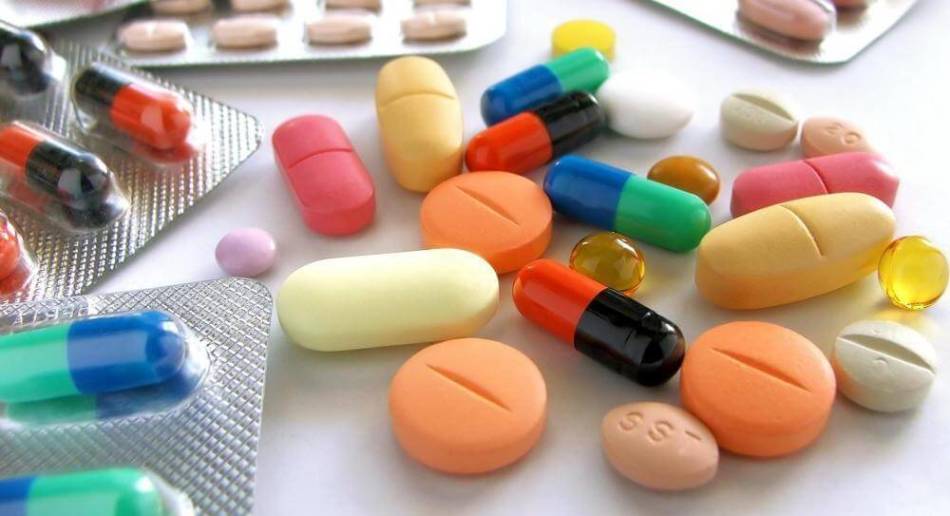
Side effects of antibiotic therapy:
- dysbacteriosis
- allergic manifestations
- toxic effect on the liver, kidneys, ENT organs
- development of microbial resistance to antibiotics
- intoxication of the body resulting from the death of microbes
- violation of the formation of immunity
- high probability of relapse after antibiotic treatment is completed
IMPORTANT: Long-term use of antibiotics will certainly have side effects, the main one of which is harm to the intestinal microflora.

Video: Antibiotics benefit and harm
How do antibiotics affect and act on viruses and inflammation?
Virus- a protein structure containing a nucleic acid inside. Viral envelope proteins serve as protection for the preservation of hereditary genetic information. When reproducing, viruses reproduce copies of themselves, also equipped with parental genes. To successfully reproduce, viruses have to get inside healthy cells.
If you try to use an antibiotic on a cell infected with a virus, nothing will happen to the virus, because the action of antibiotics is aimed solely at preventing the formation of a cell wall or suppressing protein biosynthesis. Since viruses have neither cell walls nor ribosomes, the antibiotic will be absolutely useless.
In other words, the structure of viruses differs from the structure of bacteria sensitive to antibiotics, therefore, special antiviral drugs are used to suppress the work of viral proteins and interrupt their life processes.
IMPORTANT: Doctors often prescribe antibiotics to treat viral diseases. This is done to overcome a bacterial complication that occurs against the background of a viral disease.

How do antibiotics affect and act on the heart?
It is a mistaken belief that taking antibiotics does not affect the state of the cardiovascular system. Proof of this are the results of an experiment conducted by Danish scientists in 1997 – 2011. During this time, researchers processed the treatment results of more than 5 million people.
For the experiment, volunteers aged 40 to 74 years took antibiotics often used to treat bronchitis, pneumonia and ENT infections for 7 days. The experiment revealed that taking antibiotics such as roxithromycin and clarithromycin increases the risk of cardiac arrest by 75%.
IMPORTANT: During the experiment, it turned out that penicillin is the least dangerous for the heart. Doctors should pay attention to this fact and, if possible, choose this drug for treatment.
In addition, antibiotics slightly increase the electrical activity of the heart, which can trigger arrhythmia.

How do antibiotics affect intestinal microflora and protein digestion?
Antibiotics inhibit the growth of intestinal microflora, gradually destroying it. These drugs are hostile to intestinal bacteria and at the same time resistant to their influence. Thus, taking antibiotics is a step towards suppressing the activity of beneficial microbes and their death.
Normal microflora will not be able to recover immediately due to a “hole” in the immune system.
Against this background, new diseases often break out and the normal functioning of systems, organs and tissues is disrupted.
All dietary macroelements, including proteins, are digested in the upper part of the small intestine. In this case, a small amount of proteins enters the colon undigested. Here, undigested proteins are broken down into amino acids by microbes that inhabit the large intestine.
As a result of the breakdown of proteins in the colon, compounds that are dangerous to human health can be formed. Their number is so small that with normal microflora they do not have time to cause harm.
However, long-term use of antibiotics can reduce the diversity of the microbiome, making it difficult to digest proteins and slow the elimination of harmful compounds from the intestines.
 Taking antibiotics disrupts the functioning of the gastrointestinal tract
Taking antibiotics disrupts the functioning of the gastrointestinal tract How do antibiotics affect conception, spermogram, pregnancy, fetus?
Taking antibacterial drugs slightly reduces, but does not eliminate, the likelihood of pregnancy. If the father or mother was exposed to strong antibiotics at the time of conception, a miscarriage is likely to occur.
The greatest danger from antibiotics for the fetus is up to the 13th week, the most negative period is 3 – 6 weeks. During this period, the child’s organs are formed, and exposure to potent antibacterial drugs will provoke the development of pathologies in the fetus.
Taking antibiotics causes inhibition of spermatogenesis. Male fertility declines by long time, if taking antibacterial agents occurs at an early stage of spermatogenesis.
Video: The effect of antibiotics on sperm parameters
Against the background of antibiotics, spermatozoa in most cases are damaged and lose their mobility. These defects lead to spontaneous miscarriage if such sperm take part in fertilization.
After taking antibiotics, the quality of sperm is restored and the spermogram returns to normal, it takes about 3 months. It is after this time that it is permissible to plan a pregnancy. If conception occurred earlier and the development of the embryo proceeds without pathologies or abnormalities, then everything is fine with the sperm.

How do antibiotics affect breast milk?
If a woman needs antibacterial therapy during breastfeeding, then she should not refuse this type of treatment. All antibiotics can be divided into 2 groups:
- allowed during lactation
- prohibited during lactation
The first group includes:
- Penicillins (Augmentin, Ospamox, etc.) - penetrate into breast milk in small concentrations, but can cause allergic reactions and cause loose stools in the child and mother.
- Macrolides (Erythromycin, Clarithromycin) - penetrate well into breast milk, but do not have a negative effect on the baby's condition.
- Cefolasporins (Cefradine, Ceftriaxone) penetrate into milk in negligibly small doses and do not affect the growth and development of the child.

Antibiotics prohibited during breastfeeding include:
- Sulfonamides - disrupt the exchange of bilirubin in the baby’s body, which can cause the development of jaundice.
- Lincomycin penetrates into milk in large quantities and disrupts the functioning of the child’s intestines.
- Tetracyclines penetrate into milk and destroy the baby’s tooth enamel and bones.
- Aminoglycosides are highly toxic and negatively affect the condition of the child’s hearing organs and kidneys.
- Fluoroquinolones penetrate into milk in quantities unsafe for the child’s health and disrupt the normal development of cartilage tissue.
- Clindomycin causes the development of colitis.
If a nursing mother is prescribed antibiotics of the second group, no breastfeeding there can be no speech during the treatment period.
When taking drugs from the first group during breastfeeding, the following rules must be observed:
- inform the attending physician that the child is breastfed
- do not change the prescribed dose of the drug yourself
- take the medicine immediately after breastfeeding
IMPORTANT: To ensure stock breast milk during the treatment period, express the excess after each feeding and store it in the freezer. After completing the course of antibiotics, lactation can be completely restored.

Almost all antibiotics are excreted by the kidneys. Therefore, if their work changes even slightly, the body is likely to show signs of intoxication.
Aminoglycosides and tetracyclines can damage kidney tissue. The risk is especially high when drugs from these groups are combined with non-steroidal anti-inflammatory or hormonal drugs. Then the urine test will show elevated levels of red and white blood cells, which indicates the presence of an inflammatory process in the genitourinary system.
IMPORTANT: Some antibiotics can change the color of urine (rifampicin makes it bright orange, and nitroxoline makes it deep yellow) and contribute to the formation of kidney stones. During and after taking sulfonamides, ciprofloxacin and nitroxoline, epithelial cells, red blood cells and protein are found in the urine.
Taking broad-spectrum antibiotics can cause the absence of urobilinogen in the urine.
For results general analysis Antibiotics cannot affect the blood significantly. The only thing you should pay attention to is the ESR and leukocyte formula. It is likely that these data will be somewhat distorted.
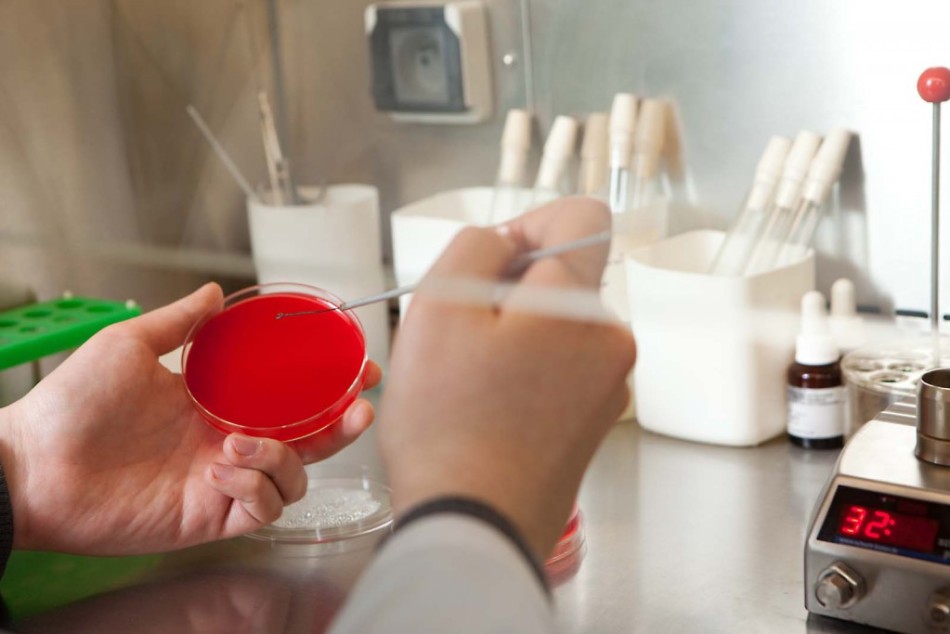
How do antibiotics affect hormones?
Hormones may be affected by some medications, however, antibiotics are not one of them. Before taking hormone tests or undergoing any treatment, you must tell your doctor that you are taking an antibacterial drug. But, definitely, the hormonal background will not change in any way from antibiotics of any group.
Antibiotics have no effect menstrual cycle. It's quite simple to explain. The menstrual cycle has two phases. In the first phase, follicles mature in the ovary under the influence of the pituitary gland. At the same time, the endometrium grows in the uterus under the influence of estrogens. The second phase is characterized by the release of luteotropic hormone in the pituitary gland and the appearance of a mature egg.
Apart from hormones, nothing can affect the process of egg maturation. Since hormones are not changed by the action of antibacterial drugs, taking them will not affect the menstrual cycle.

How do antibiotics affect potency?
Serious antibiotics can negatively affect male potency. But if, after taking antibacterial drugs, a man notices a decrease in libido, erectile dysfunction, which causes reluctance to have sex, then there is no need to worry too much. A short period of time after the end of treatment sex life will come back to normal.
IMPORTANT: Despite the fact that potency is restored almost immediately after finishing taking antibiotics, planning a pregnancy will need to be delayed. The qualitative composition of sperm will be restored only 3 months after the end of treatment.

How do antibiotics affect the immune system?
Antibiotics kill indiscriminately all bacteria, both harmful and beneficial, that inhabit the intestines and maintain balance in the body. As a result, in immune system a serious failure occurs.
The uncontrolled growth of yeast fungi disrupts the functioning of the intestines - allergic reactions to food products occur, intestinal permeability increases, diarrhea and abdominal pain appear after eating. Women often develop thrush while taking strong antibiotics. At the same time, a general deterioration in health, lethargy and poor appetite are normal phenomena.
IMPORTANT: The immune system will suffer more the longer it is exposed to the antibiotic. In this case, the method of administration of the drug does not matter.
To somewhat soften the blow to the immune system, it is recommended to strictly adhere to the dosage of the antibiotic and take probiotics and vitamins prescribed by the doctor.
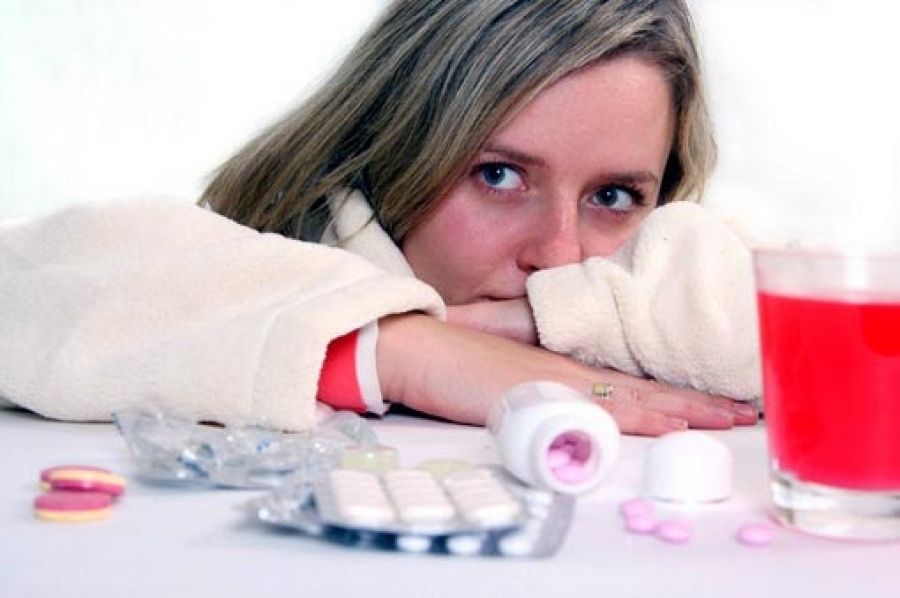
How do antibiotics affect blood pressure?
If the patient strictly follows the doctor’s instructions, he will not notice any serious changes in his body while taking antibiotics. However, even a slight deviation from the rules for taking antibacterial drugs can lead to serious consequences.
Thus, the pressure may rise sharply, and malfunctions will appear in the functioning of the cardiovascular system if, during treatment with an antibiotic, the patient consumed alcoholic drink or added any medication yourself.
If the patient notes that each antibiotic intake is accompanied by a change in blood pressure, he must inform the doctor about this. Perhaps the prescribed treatment regimen needs correction.
How do antibiotics affect the stomach and pancreas?
The pancreas and stomach are the most sensitive organs to antibiotics. Disturbances in their work occur due to a decrease in the protective resident flora and an increase in the number of pathogenic microorganisms. As a result, a number of complex chemical reactions take place in the gastrointestinal tract that are impossible in the case of normal functioning of the organs.
IMPORTANT: Signs that negative changes have occurred in the gastrointestinal tract after taking antibiotics are stomach pain, flatulence, nausea, vomiting, heartburn, and diarrhea. To minimize the risk of developing these side effects, probiotics are prescribed.
How do antibiotics affect the liver and kidneys?
Liver- This is a kind of filter in the body. If the liver is absolutely healthy, it will be able to withstand increased load without problems for some time, neutralizing toxic substances. But if liver functions are impaired, antibiotic therapy must necessarily be accompanied by the use of hepatoprotectors (Urosan, Gepabene, Karsil).
Kidneys– an organ that cleanses the blood of harmful substances and maintains the acid-base balance in the body. With healthy kidneys, short-term use of antibiotics will not have a negative effect.
However, diseases of the urinary system or long-term use of antibiotics can cause changes in the processes of excretion and absorption chemical elements, development of pathological reactions.
IMPORTANT: Signs that antibiotics have impaired kidney function include lower back pain, changes in the amount and color of urine, and an increase in temperature.

How do antibiotics affect the nervous system?
To find out the effect of antibiotics on the nervous system, scientists at the Center for Molecular Medicine conducted a series of studies, which revealed the following:
- short-term use of antibiotics does not affect work or condition nervous system
- Long-term use of antibiotics not only destroys intestinal bacteria, but also slows down
- production of brain cells, leading to memory impairment
- restoration of the functioning of the nervous system is facilitated by taking immunomodulators and probiotics during the recovery period, as well as physical exercise
 Long-term use of antibiotics may cause memory impairment
Long-term use of antibiotics may cause memory impairment How do antibiotics affect hearing?
It has been proven that some antibiotics can accumulate in the fluid of the ears and cause pathological changes leading to weakened hearing and deafness. Such drugs include:
- streptomycin
- kanamycin
- neomycin
- kanamycin
- gentamicin
- tobramycin
- amikacin
- netilmicin
- sisomicin
- tetracyclines
- erythromycin
- azithromycin
- vancomycin
- polymyxin B
- colistin
- gramicidin
- bacitracin
- mupirocin
The fact that the drugs have side effects in the form of hearing impairment is stated in the instructions for the medicine. However, they are widely used in therapeutic and pediatric practice.
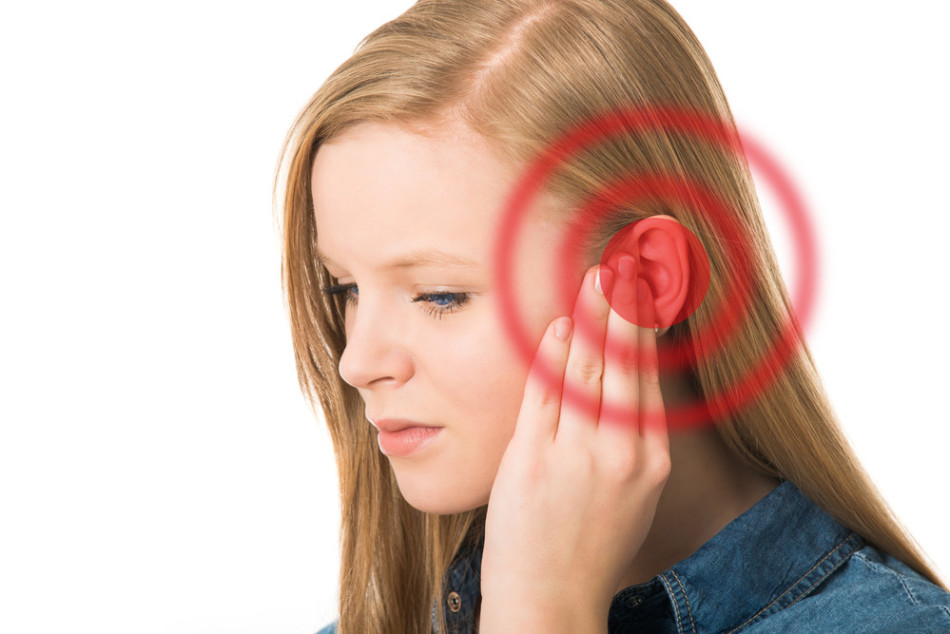
How do antibiotics affect teeth?
To find out the effect of antibacterial drugs on the condition of teeth, medical scientists from Finland conducted a series of experiments, as a result of which it turned out that:
- Taking penicillin and macrolide by children aged 1 to 3 years increases the risk of developing tooth enamel defects
- in children school age Taking antibiotics in many cases leads to demineralization of enamel
most often, demineralization occurs after taking macrolide antibiotics (erythromycin, clarithromycin) - every new trick antibacterial drugs increases the risk of developing enamel defects
- Frequent treatment of children with antibiotics results in molar-incisal hypomineralization and caries
- restoration of damaged teeth quickly deteriorates after a course of antibiotics
The negative effect of antibiotics on the tooth enamel of people over 14 years of age is not so pronounced, but their long-term use can also cause harm.
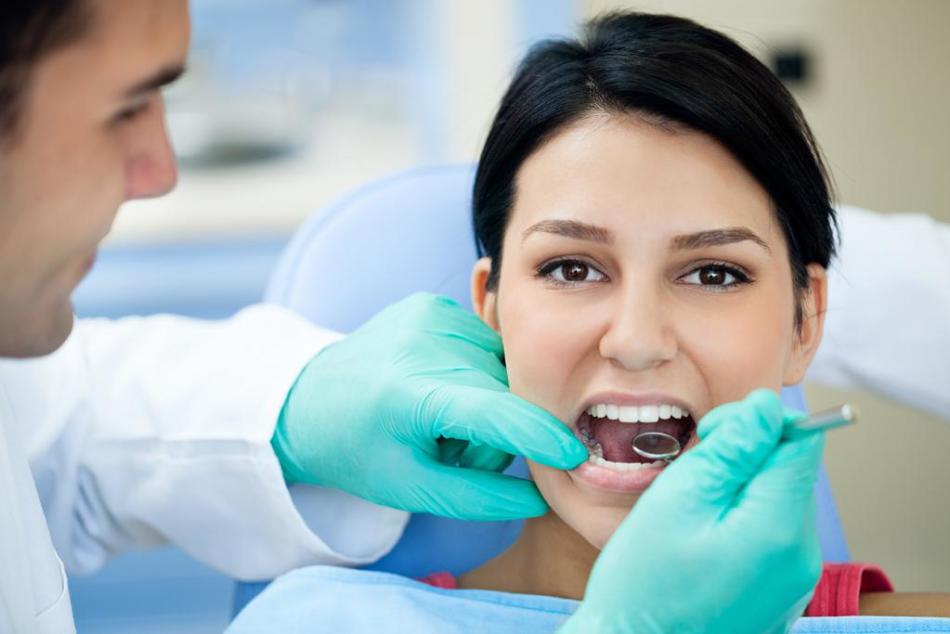
Long-term use of antibiotics reduces hemoglobin. This phenomenon is explained by the fact that the body tries to recover on its own, consuming organic iron compounds for this. Iron is necessary for the formation of leukocyte nuclei.
Accordingly, the more serious the treatment, the more the functions of organs and systems are disrupted by antibiotics, the more iron the body will use to attempt recovery.
The hemoglobin level will return to normal faster if you add pomegranate, beef and dried apricots to the menu. Medicinal iron-containing preparations such as Ferrum Lek, Sorbifer, Totema and others will also help.
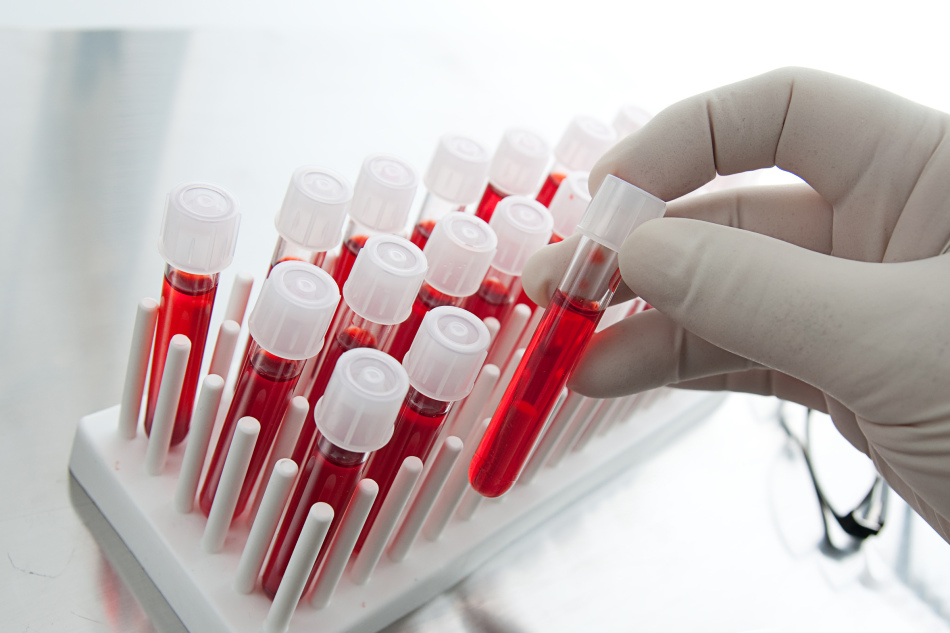
The rate at which antibiotics are eliminated from the body is affected by its form, group and method of administration. Many injectable drugs are eliminated from the body within 8 - 12 hours after the last injection. Suspensions and tablets act in the body for 12 – 24 hours. The body is fully restored only after 3 months after treatment.
IMPORTANT: How long the drug will remain in the body depends on the age and condition of the patient. The elimination of antibiotics slows down in people suffering from diseases of the liver, genitourinary system, kidneys, as well as in young children.
To remove the antibiotic as soon as possible, you must:
- drink plenty of water and herbal teas
- restore liver function with medications
- use probiotics
- eat enough dairy products

How to cleanse and restore the body after antibiotics?
After finishing taking antibiotics, you need to take care of the body’s recovery. If this is not done, a new disease may develop soon.
First of all, in order to exclude conditions favorable for the development of pathogenic flora, a diet should be organized. To do this, you need to remove confectionery and bakery products, sugar, potatoes. Replace milk with fermented milk products containing bifidobacteria. They stick to this diet for about 3 months.
Together with dietary nutrition, the recovery of the body is facilitated by the use of immunomodulatory drugs, vitamin complexes and bacteriophages that suppress pathogenic flora.
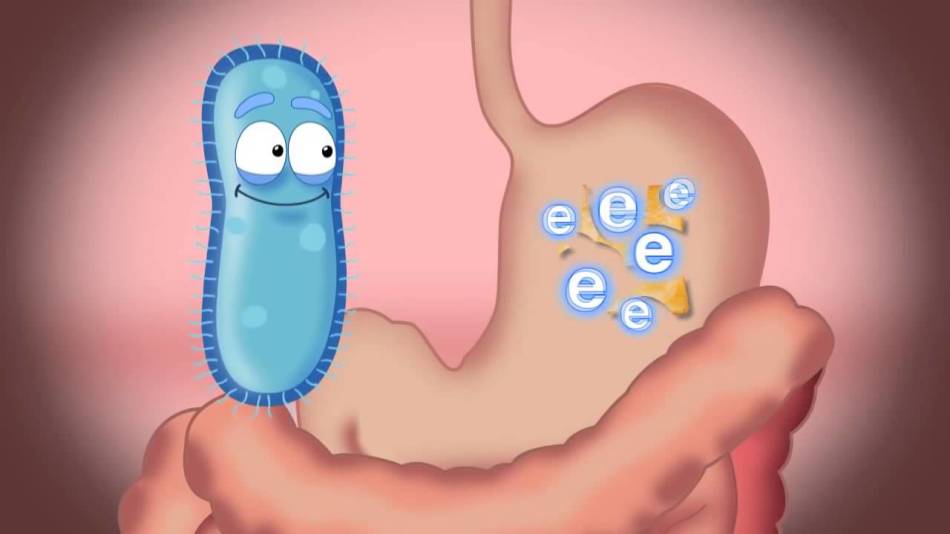
Only an integrated approach can give a lasting positive result in solving the problem of cleansing and restoring the body after antibiotics.

